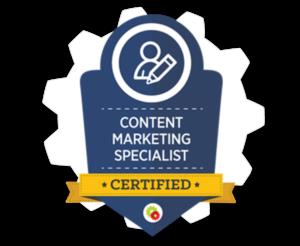
Before we dive into the second way to assume power in your business, let’s revisit Part 1.
Who informs your marketing strategy?
YOU, with your carefully curated strategy informed by data and deep knowledge of your brand and audience? Or any of the 3 Cs below?
- Competitors: Their advertising and digital presence and seemingly never-ending budgets consume the landscape.
- Colleagues: Their tried-and-true proven tactics or lessons learned.
- Customers: Their calls, requests, and ideas.
Considering any of the above is not bad, in fact, it can be very wise! However, listening quickly becomes devastating if it lends to their running our business or marketing department.
It’s time we move from defense to offense, sitting in the driver’s seat rather than allowing any of the 3 Cs to control.
It is one thing to learn from and entirely another to be controlled by.
In Part 1, we explored how knowing what we want is critical to regaining power.
1) Knowing what you want protects the bottom line.
2) Knowing what you want protects you from the 3 Cs.
3) Knowing what you want protects you from running on auto-pilot.
You can read Part 1 here; in the meantime, let’s dive in!
How to Regain Control of Your Business: Knowing Who You Are
Vertical alignment is a favorite concept of mine, coined over the last two years throughout my personal journey of knowing self.
Consider the diagram below.

Vertical alignment is the state of internal being centered with who you are at your core.
Horizontal alignment is the state of external doing engaged with the world around you.
In a state of vertical alignment, your business operates from its core center, predicated on its mission, values, and brand. It is authentic and confident and cuts through the noise because it is entirely unique from every competitor in the market.
From this vertical alignment, your business is positioned for horizontal alignment to fulfill the integrity of its intended services, instituted processes, and promised results.
A strong brand is not only differentiated in the market by its vertical alignment but delivers consistently and reliably in terms of its products, offerings, and services and also in terms of the customer experience by its horizontal alignment.
Let’s examine what knowing who you are looks like in application, as well as some habits to implement with your team to strengthen vertical alignment.
1) Knowing who You are Protects You from Horizontal Voices.
The strength of “Who We Are” predicates the ability to maintain vertical alignment when something threatens your stability. When a colleague proposes a tactic that is not aligned with your values. When the customer comes calling with ideas that will knock you off course as bandwidth is limited or the budget is tight.
I was on a call with a gal from my Mastermind when I mentioned a retreat I am excited to launch in the coming months.
I shared that I was considering its positioning, given its curriculum is rooted in emotional intelligence (EQ) to inform personal brand development. The retreat serves C-Suite, but as EQ is not a common conversation among this audience, I was considering the best positioning.

She advised, “Sell them solely on the business aspects, and then sneak attack with the EQ when they’re at the retreat!”
At first blush, it sounds reasonable. After all, there’s a reason why the phrase, “Sell the people what they want, give them what they need,” is popular.
Horizontal advice and counsel can produce a wealth of knowledge. However, we must always approach the horizontal landscape – the external – powered by vertical alignment – centered internally with the core of who we are.
Upon considering my values of who I am and the vision of what I want for this event, I realized the lack of transparency is not in alignment with my values nor setting the right expectations for the experience.
Sure, maybe I would get more sales; however, my bottom line — what I want — is not just sales. I want transformation on an emotional level. I want C-Suite execs to leave powered from a place of emotional intelligence to decrease decisions made out of alignment with who they are or executing tactics rooted in guilt, not vision.
Ultimately, one of my core values is authenticity, and I must make business decisions accordingly.
2) Knowing who You are Protects You from Reactivity.
Operating from vertical alignment maintains focus on the bottom line and the strategy to achieve it. From this position, you are protected from reacting to the horizontal pressures of the 3 Cs: Competitors, Colleagues, and Customers.
This does not mean you do not adjust tactics or learn.

However, your approach to adjustments is proactive direction, not reactive deviations. To do this, consider the following questions:
First: How does their (any one of the 3 Cs) tactic measure against my proven track record of success?
If your colleague promotes adding newsletters to your strategy, lean in and ask, “Why?”
- What are their outcomes?
- What metrics are they tracking for success?
- What is their bottom line against yours?
- How do newsletters fit into their strategy and stage(s) of the customer journey?
Always consider your historical track record of success first and foremost.
Have you tried newsletters in the past? Is their audience different from yours? Why are newsletters good for them when they did not prove profitable for you?
Operate with your head up and your eyes open.
Maintain focus on your bottom line and ask questions. Revisit your data, and don’t just take their word for it.
2. Am I allocating time in my schedule?
I had coffee with the former CEO of Jiffy Lube, who built the empire that it is today.
He could not emphasize more how critical it is to allocate time for thinking. Just being — not doing — and thinking about your business or department.

Especially for senior leaders or business owners, but even still for junior staff.
The time and space to be fosters creative thinking, new ideas, and energy. Some of my best campaigns are conjured on a walk or in the shower.
Kasim Aslam, founder of the world’s #1 Google Ads agency and a dear friend of mine, is a machine when it comes to hacks and habits. He encouraged me to take an audit of my calendar over the last 30 days to assess how I spend time.
“Create three buckets,” he said. “Organize them by the following:
- Tasks that Generate Revenue
- Tasks that Cost Me Money
- Tasks that Didn’t Earn Anything”
He and I chatted after I completed this exercise, and I added one to the list: Tasks that are Life-Giving.
Friends — if we are running empty, exhausted, or emotionally depleted, our creative and strategic wherewithal will be significantly diminished. We are holistic creatures and, therefore, must nurture our mind, body, soul, and spirit to maintain optimum capacity for impact.

I shared this hack with a friend of mine. Not only did she identify meetings that were costing her money and thus needed to be eliminated, but she also identified that particular meetings could actually turn revenue-generating! She spent a good amount of time each month facilitating introductions; now, she is adding Strategic Partnerships to her suite of services.
ACTION: Analyze your calendar’s last 30-60 days against the list above.
Include what is life-giving!
How are you spending your time? What is the data showing you? Are you on the path to achieving what you want and living in alignment with who you want to be?
Share with your team or business partner for the purpose of accountability, and implement practical changes accordingly.
Finally, remember: If you will not protect your time, no one else will.
3) Knowing who You are Protects You from Lack.
“What are you proud of?” someone asked me last year.
“Nothing!” I reply too quickly. “I know I’m not living up to my potential or operating in the full capacity I could be.”

They looked at me in shock. “You need to read The Gap And The Gain.”
I silently rolled my eyes.
I already knew the premise of the book, or I thought I did. I mused: My vision is so big, and I have so much to accomplish. The thought of solely focusing on “my wins” sounded like an excuse to abdicate personal responsibility.
But I acquiesced.
The premise of this book is to measure one’s self from where they started and the success from that place to where they are today — the gains — rather than from where they hope to get and the seemingly never-ending distance — the gap.
Ultimately, Dr. Benjamin Hardy and Dan Sullivan encourage changing perspectives to assign success, considering the starting point rather than the destination.
The book opens with the following story:
Dan Jensen was an Olympic speed skater, notably the fastest in the world. But in each game spanning a decade, Jansen could not catch a break. “Flukes” — even tragedy with the death of his sister in the early morning of the 1988 Olympics — continued to disrupt the prediction of him being favored as the winner.

The 1994 Olympics were the last of his career. He had one more shot.
Preceding his last Olympics in 1994, Jansen adjusted his mindset. He focused on every single person who invested in him, leading to this moment. He considered just how very lucky he was to even participate in the first place. He thought about his love for the sport itself, all of which led to an overwhelming realization of just how much he had gained throughout his life.
He raced the 1994 Olympic games differently, as his mindset powering every stride was one of confidence and gratitude — predicated on the gains rather than the gap in his life.
This race secured him his first and only gold medal and broke a world record, simultaneously proving one of the most emotional wins in Olympic history.
Friends, knowing who we are on the personal and professional level, can protect us from those voices of shame or guilt that creep in.
PERSONAL ACTION: Create two columns. On one side, create a list of where you were when you started your business or your position at your company. Include skills and networks and even feelings about where you were in life. On the other side, outline where you are today.
Look at how far you’ve come.
COMPANY ACTION: Implement a quarterly meeting to review the past three months. Where did you start? Where are you now?
Celebrate the gain!
Only from this place of gain mindset, can you create goals for the next quarter predicated on where you are today.
Ultimately, my hope for you is that you deliver exceptional and memorable experiences laced with empathy toward the customer (horizontally aligned) yet powered by the authenticity of the brand (vertically aligned).
Aligning vertically maintains our focus on the bottom line and powers horizontal fulfillment.

Want to get certified in Content Marketing?
Leverage the tools and channels to predictably and profitably drive awareness, leads, sales, and referrals—EVERYTHING you need to know to become a true master of digital marketing. Click Here
Granted, there will be strategic times and seasons for adjustment; however, these changes are to be made on the heels of consulting who we are as a brand — not in reaction to the horizontal landscape of what is the latest and greatest in the industry.
In Conclusion…
Taking back control of your business and marketing strategies requires a conscious effort to resist external pressures and realign with what you want and who you are.
Final thoughts as we wrap up:
First, identify the root issue(s).
Consider which of the 3 Cs holds the most power: be it competition, colleagues, or customers.
Second, align vertically.
Vertical alignment facilitates individuality in the market and ensures you — and I — stand out and shine while serving our customers well.
Third, keep the bottom line in view.
Implement a routine that keeps you and your team focused on what matters most, and then create the cascading strategy necessary to accomplish it.
Fourth, maintain your mindsets.
Who You Are includes values for the internal culture. Guide your team in acknowledging the progress made along the way and embracing the gains to operate from a position of strength and confidence.
Fifth, maintain humility.
I cannot emphasize enough the importance of humility and being open to what others are doing. However, horizontal alignment must come after vertical alignment. Otherwise, we will be at the mercy of the whims and fads of everyone around us. Humility allows us to be open to external inputs and vertically aligned at the same time.
Buckle up, friends! It’s time to take back the wheel and drive our businesses forward.
The power lies with you and me.
[TAG9]The post 2 Ways to Take Back the Power in Your Business: Part 2 appeared first on DigitalMarketer.
Frequently Asked Questions
What keeps you motivated to be an entrepreneur?
My greatest motivator is freedom. There are limitations on how much people can earn, save and invest, buy, borrow, rent or drive, eat, sleep, play, and fly in this world. We don't have to live within those limitations. We are free to pursue our dreams and make them come true.
We must not allow these limitations to dictate our lives. If we do, we lose sight of the fact that we are the masters of our destiny. We are the captains and crew of our ships. We are the architects to our lives.
I am driven by the desire to create wealth beyond my wildest imagination. To create businesses that have a greater impact than life itself. To create businesses that can change the way people live their lives forever.
To create stronger businesses than any governments, more influential as any religion, and longer lasting than time.
That's what keeps me here. I want to help entrepreneurs grow and expand their businesses faster than anyone else. Because success is for everyone.
What are the 3 motivations behind an entrepreneur's success?
Entrepreneurs' three greatest motivations are freedom and money.
- Freedom means freedom. It is having the freedom to do what and when you want. This is why we are entrepreneurs even if our current job or situation restricts us.
- It is important to have money. Without it, we wouldn't even think about starting a business. While we can survive on food, water, shelter and money, it is not possible to make ends meet without money.
- Knowledge is the third motivation. Entrepreneurship requires that we continue to learn. That is why we frequently find ourselves reading books and attending seminars.
This is what drives us towards our goals and success. It gives purpose and meaning to our lives.
These three elements are why we became entrepreneurs. These are the driving forces that keep us going every day.
If any of these three items are missing, it's possible to pack up and move home. Without these three items, we will never truly be happy.
What are 6 essential questions that entrepreneurs must ask to be motivated?
Motivation is the most important ingredient for any business. Motivation is essential for any business. Without it, it's difficult to get out of bed every day. Without motivation, it'll be hard to finish your projects. Without motivation, it's impossible to reach your goals. How do we find motivation?
Perhaps you are asking yourself "What motivates?" You might be surprised at the answer. Perhaps you have been asking this question for years. This question is one of life's most rewarding rewards. It allows you to uncover your motivation.
Discovering why you are there is the best motivation. When you discover what drives you, you can finally feel fulfilled. Your purpose becomes clearer and more meaningful. Why do you care? When you figure that out, you'll find it much easier to stay motivated.
To find your motivation, you must look within. These are your questions:
- What are my passions?
- What makes my heart beat more quickly?
- What lights me up inside?
- What gives me butterflies in my stomach?
- What makes me feel alive?
- What draws you back to your project time and again?
Once you have your answers, it will be possible to determine your true motivations.
Motivation will be your strength through difficult times. You will find strength whenever you need it. It will inspire you to work harder. You will be motivated to achieve your goals.
You'll never stop wondering what your motivation is if you are like me.
So, take some time today to think about what really motivates you. You just might be surprised at what you find.
What are five key factors that motivate entrepreneurs?
Motivation is the key ingredient to success. Without it, everything would fail. We wouldn't exist without it.
Motivational psychology is the study and analysis of human behavior when motivated. We do amazing things when we are motivated. It is also evident that our motivation is limited.
These are the five main motivating factors
- Autonomy – The freedom of choice
- Mastery - the ability to master skills
- Purpose - The sense of purpose
- Relatedness - The feeling of belonging
- Reciprocity is the willingness to give back
You may feel that these motivators could be applied to your business. However, each one offers a slightly different perspective of why people act the way they do.
One person might desire autonomy in order to live the life he chooses. Perhaps he is seeking mastery to improve his job.
You could go on. These are just a few of the possible motivations. There are countless others. Which ones might be relevant for your situation? You decide.
Write down three words to describe your ideal working environment. Next, use those words to describe your current working conditions.
If you struggle to come up with ideas, simply ask yourself why are you doing this. The answer will help you identify your goals.
Once you understand what you want, then you can figure out where your current position is. This knowledge will help you decide if you should make any changes.
If you don’t want to make any changes, it's time to assess your options.
If you want to make changes, you need to think of ways to motivate you.
Which motivator is the most powerful? It's hard not to say. So instead of focusing on one single factor, focus on all five.
This will allow you to achieve your ultimate goal, becoming a successful entrepreneur.
What are the motivations behind entrepreneurs?
There are three main motivations for entrepreneurs. Each type of motivation has its strengths and weaknesses.
External motivation is the most prevalent form of motivation. An individual wants more money. This motivation usually stems from financial concerns.
External motivation is driven by personal interest, ambition, and desire. This type of motivation leads to people who are extremely goal-oriented.
It is rare to find internal motivation. People with inner motivation are less likely to seek wealth. Instead, they aim for other goals, such as self-development or fulfillment.
People with internal motivation are often called "passionate" because they find satisfaction in their work.
Finally, intrinsic motivation is the least popular type of motivation. Intrinsic motivation describes individuals who enjoy and are satisfied working towards a particular goal.
Internal motivation is much more motivating than external or intrinsic motivation.
Motivation comes from within. It is based in the belief that each person has certain talents or abilities. These talents and abilities give them the ability to accomplish extraordinary things that no other person could.
It is satisfying and fulfilling to realize our potential and talents. We feel like we're doing important work.
In essence, intrinsic motivation is what makes you happy. The joy that comes from knowing we can accomplish whatever we set our minds on is intrinsic motivation.
This feeling of accomplishment keeps you going no matter what the circumstances are.
If you don’t enjoy what it is, then why bother?
If you want to know more about entrepreneur motivation, click here.
How to Motivate Yourself as an Entrepreneur?
Find someone to motivate you. Ask someone who's working hard to reach his goals for how he achieved them.
Ask for advice, listen, learn and most importantly follow it. Follow the example of someone who is successful.
You can do whatever it takes to be that person. Learn from them. Take notes. Follow their example.
Keep moving forward. Keep moving. Never stop learning. Never give up.
Don't listen to anyone who tells you you are incapable. Do not let anyone tell your that you aren't capable of following a specific path.
Even though you may fail, that doesn't make it any less valuable. Failure can be an opportunity to learn and grow. To learn more. To push harder.
Failure is just another step on the road to success.
So go ahead and get started. Get started today and you will be closer to your goals.
Why wait?
Statistics
- “Life is 10% what happens to you and 90% how you react to it.” (oberlo.com)
- "If you improve by just 1% every single day, in several months, you will have improved by 100%. (carolroth.com)
- "Most of the time when people ask me about motivation, 80 percent of the time, I attribute it to gratitude. (entrepreneur.com)
- Invest at least 30% managing those with authority over you and 15% managing your peers.” (americanexpress.com)
- I shifted my motivational point from something huge (and undefined) to improve by just 1% each day. (carolroth.com)
External Links
[TAG21]
- This is the inspiring quote Jeff Bezos keeps on his fridge
- Billionaire Richard Branson: These are my top 10 tips for success
[TAG24]
[TAG26]
[TAG28]
How To
What are three things that keep entrepreneurs motivated and successful?
Entrepreneurs should be motivated. Without motivation, it is difficult to be driven and determined to succeed. What is the motivation behind our success?
There are three main reasons why we stay motivated:
- We love our business
- Our vision/mission transcends ourselves
- We have a passion for helping others
Find ways to tap these motivations to stay motivated. For example, when we love our business, we feel great pride and satisfaction when we do well. We feel happier knowing we are making an impact in the world when we have a clear vision. When we feel fulfilled when we help others, it is because we are giving back to society.
In fact, according to a study conducted by Dr. John Cacioppo, Ph.D., Professor Emeritus at the University of Chicago, the most effective way to motivate yourself is to focus on what you care about. In his book "Loneliness", he states that "the best source of motivation is caring about something." By focusing on what matters to us, we become more engaged and energized. This makes sense because if we care about something, then we will be more passionate to do it.
Did you miss our previous article...
https://consumernewsnetwork.com/technology-news/12-facebook-ad-metrics-worth-your-attention






